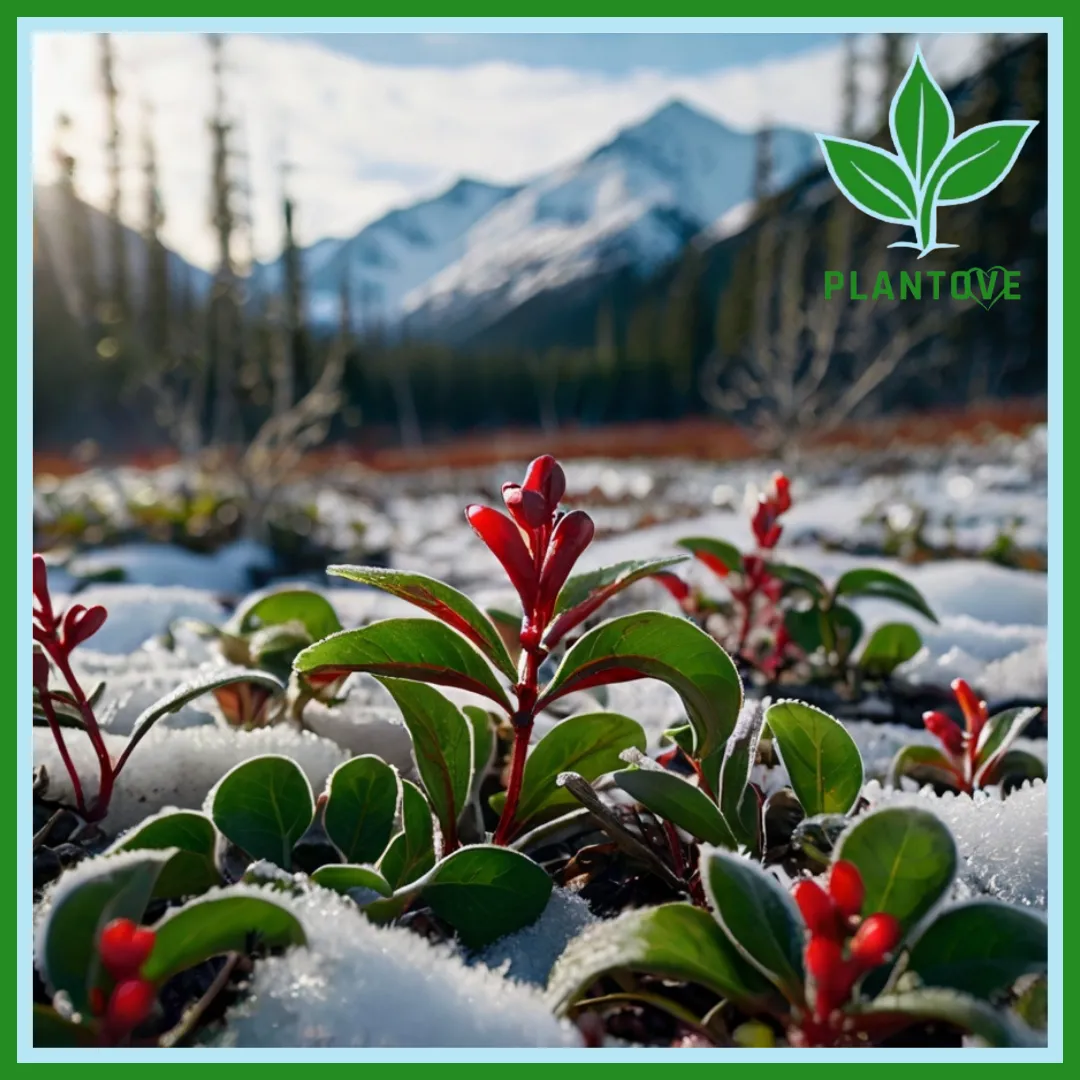Wintergreen plants are well-known for their aromatic leaves and berries. In Alaska, these hardy plants thrive in the wild, and many wonder, are wintergreen plants in Alaska edible? This article will explore the edibility of wintergreen plants, their health benefits, how to identify them, and how to safely consume them.
Understanding Wintergreen Plants in Alaska
What Are Wintergreen Plants?
Wintergreen plants, scientifically known as Gaultheria procumbens, are low-growing evergreen shrubs commonly found in cool climates, including Alaska. The plants are easily recognized by their glossy leaves and small red berries.
Characteristics of Wintergreen Plants
- Leaves: Dark green, shiny leaves that remain on the plant year-round.
- Berries: Small, bright red berries that appear in late summer and persist through winter.
- Flowers: Small white or pink bell-shaped flowers bloom in early summer.
- Aroma: The leaves emit a minty aroma when crushed.
Wintergreen plants are often used for their medicinal properties and are a popular ingredient in herbal remedies, especially in Indigenous communities in Alaska.
Are Wintergreen Plants in Alaska Edible?
Yes, wintergreen plants in Alaska are edible, but there are certain considerations to be aware of before consuming them. Both the leaves and berries can be eaten, though they are often used in small amounts due to their strong flavor and potential toxicity if consumed in large quantities.
Edibility of Wintergreen Berries
The berries of the wintergreen plant are edible and have a slightly sweet, minty flavor. They can be eaten raw or used in various recipes.
How to Eat Wintergreen Berries
- Raw Consumption: The berries can be eaten straight from the plant.
- In Recipes: Wintergreen berries can be added to salads, jams, and desserts.
- Dried Berries: They can also be dried and used as a spice or tea flavoring.
Edibility of Wintergreen Leaves
Wintergreen leaves are also edible, but they are usually consumed in the form of tea or used as a flavoring. The leaves contain methyl salicylate, a compound that gives wintergreen its minty flavor but can be toxic in large doses.
How to Use Wintergreen Leaves
- Wintergreen Tea: Brewed from dried or fresh leaves, wintergreen tea is a popular herbal remedy for various ailments.
- Flavoring: The leaves can be used to add a minty flavor to foods and drinks, but they should be used sparingly.
Health Benefits of Wintergreen Plants
Wintergreen plants are not only edible but also offer several health benefits. Indigenous peoples in Alaska and other regions have used these plants for centuries in traditional medicine.
Pain Relief
Wintergreen contains methyl salicylate, a compound similar to aspirin, making it effective for pain relief. Traditionally, wintergreen leaves were used to relieve headaches, muscle pain, and joint discomfort.
How to Use Wintergreen for Pain Relief
- Topical Application: Wintergreen oil can be applied to the skin for localized pain relief.
- Wintergreen Tea: Drinking wintergreen tea may help reduce inflammation and relieve internal discomfort.
Digestive Health
Wintergreen leaves have been used to support digestive health. The tea made from the leaves can help alleviate stomachaches and digestive issues such as gas and bloating.
How to Make Wintergreen Tea for Digestive Issues
- Ingredients: Fresh or dried wintergreen leaves and hot water.
- Instructions: Steep the leaves in hot water for 5-10 minutes, then strain and drink.
Respiratory Support
Wintergreen tea can also help relieve symptoms of respiratory infections, such as congestion and coughs. The minty aroma and natural anti-inflammatory properties of wintergreen can ease breathing issues.
Antioxidant Properties
Wintergreen berries contain antioxidants that help fight free radicals and reduce oxidative stress in the body. These antioxidants can support overall health and potentially reduce the risk of chronic diseases.
How to Identify Wintergreen Plants in Alaska
When foraging for wintergreen plants in Alaska, it’s important to know how to identify them accurately to avoid mistaking them for other similar-looking plants.
Key Identification Features
- Size: Wintergreen plants are small, typically growing to about 4 to 6 inches in height.
- Leaves: The dark green leaves are oval-shaped, glossy, and about 1 to 2 inches long. When crushed, the leaves release a strong minty aroma.
- Berries: The red berries are round and about the size of a pea, often remaining on the plant through the winter.
- Flowers: Small white or pale pink bell-shaped flowers bloom in early summer.
How to Safely Consume Wintergreen Plants
While wintergreen plants are edible, it’s crucial to consume them in moderation due to the presence of methyl salicylate, especially in the leaves. Large quantities of this compound can be toxic, particularly for children and pets.
Dosage Considerations
- Berries: Eating a handful of berries is generally safe. Avoid consuming large quantities at once.
- Leaves: Use only a small amount of wintergreen leaves for teas or flavoring. One or two leaves per cup of tea is sufficient.
Avoiding Toxicity
- Children and Pets: Keep wintergreen leaves and oil away from children and pets, as they are more susceptible to methyl salicylate poisoning.
- Allergic Reactions: Some people may be allergic to wintergreen or its compounds. If you experience any adverse reactions, discontinue use immediately.
How to Harvest Wintergreen Plants in Alaska
If you’re interested in foraging wintergreen plants in Alaska, here’s how to safely and sustainably harvest them.
Harvesting Leaves
- Best Time: Harvest wintergreen leaves in late summer or early fall when they are most aromatic.
- Method: Use scissors or pruning shears to carefully snip off the leaves without damaging the plant.
Harvesting Berries
- Best Time: Wintergreen berries are typically ready to harvest in late summer and can remain on the plant through the winter.
- Method: Gently pluck the berries from the plant, being careful not to damage the branches.
Sustainable Harvesting
- Leave Some Behind: Always leave some leaves and berries on the plant to allow it to continue growing and reproducing.
- Avoid Overharvesting: Be mindful of the environment and only take what you need to ensure the survival of the plant population.
Cooking and Recipes with Wintergreen Plants
Wintergreen plants offer unique culinary possibilities, especially when it comes to their berries. Here are some ideas on how to incorporate wintergreen into your cooking.
Wintergreen Berry Jam
Wintergreen berries can be used to make a flavorful jam. Simply combine the berries with sugar and water, then cook them down into a thick, sweet spread.
Wintergreen-Infused Water
For a refreshing drink, add a few wintergreen leaves to a pitcher of cold water. Allow the leaves to steep for a few hours, then strain and enjoy.
Baked Goods
Wintergreen berries can also be added to muffins, cakes, and cookies for a subtle minty flavor.
Conclusion
So, are wintergreen plants in Alaska edible? Yes, they are! Both the berries and leaves of the wintergreen plant are edible and offer a variety of health benefits. However, due to the presence of methyl salicylate, it’s essential to consume them in moderation. When foraging for wintergreen plants in Alaska, make sure to identify them correctly and harvest them sustainably. By doing so, you can enjoy the unique flavors and medicinal properties of wintergreen while ensuring the plants continue to thrive in their natural habitat.

